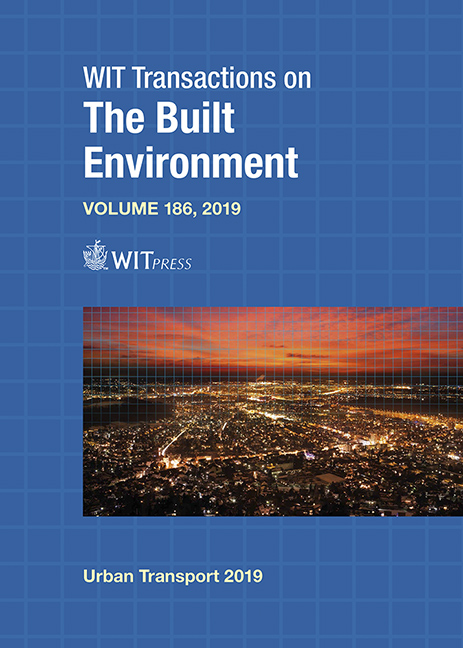CONSUMER PREDISPOSITION AND BEHAVIOR TOWARDS MOBILITY-AS-A-SERVICE AMONG UNIVERSITY STUDENTS IN A DEVELOPING COUNTRY
Price
Free (open access)
Transaction
Volume
186
Pages
12
Page Range
163 - 174
Published
2019
Size
322 kb
Paper DOI
10.2495/UT190151
Copyright
WIT Press
Author(s)
RODRIGO MARÇAL GANDIA, JULIA R. OLIVEIRA, FABIO ANTONIALLI, JOEL YUTAKA SUGANO, ISABELLE NICOLAÏ, IZABELA R. CARDOSO OLIVEIRA
Abstract
Mobility-as-a-Service (MaaS) has been recently gaining ground, presenting a shift away from existing ownership-based transportation and towards access-based ones. MaaS is still surrounded by uncertainties: its development and applicability are mainly centered in developed countries; however, we believe that MaaS is modular, adaptable and applicable to several realities. In this sense, this study aims to examine university student’s demand and predisposition for MaaS usage in a developing country, as well as to understand the differences in mobility perception among those students who are car users and non-car users. This survey was applied to over 300 university students in a Brazilian city, Lavras. Using the CART algorithm, we obtained classification trees to predict favorable responses related to MaaS use, based on several predictor variables (socio-economic characteristics, means of transport used, distance, etc.). We observed that car users are a little less sensitive to cost than non-car users. For car users, the commute alternatives that take longer, with less flexibility and availability – even when offered at lower cost – are not appealing, while the non-car users accept alternative options and expend more time when lower costs are available. Also, in general, a tree-based classification model predicted a positive adherence possibility for a MaaS scheme for both car users and non-car users (69%). As conclusions, this study suggests that there is a predisposition to accept the MaaS model for creating value for commuters in a developing country. We found that many MaaS characteristics (e.g. payment via app, transportation integration, monthly plan, customization, and so on) presented a positively predictable possibility of substitution, especially for Millennials. Also, we found that bicycles may be a mode that can be explored for MaaS schemes worldwide, and that hitchhiking could be used as a strategy to apply MaaS in places where public transportation lacks efficiency.
Keywords
college students, developing countries, Mobility-as-a-Service, public transportation, travel behavior, university students, urban mobility, tree-based classification model





